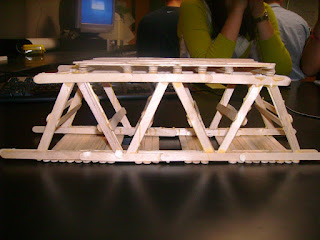Popular Science (12/2, Beck) reports, "Statue Cruises, which provides ferry service to the Statue of Liberty and Ellis Island, has signed an agreement with Derecktor Shipyards in Bridgeport, Connecticut to create the world's first hybrid ferry that runs on hydrogen, solar and wind power." The new ferry, which is expected to be ready by spring, is "capable of carrying 600 passengers, will be equipped with hydrogen fuel cells, solar panels and wind turbines. A proton exchange membrane fuel cell will turn hydrogen into electricity, though the Hornblower will also house Tier 2 diesel engines." In addition to power supply, "developers also plan to include as many eco-friendly materials as possible in the construction of the vessel, including recycled glass countertops, LED lighting, and aluminum wall coverings in place of wallpaper."
Friday, December 3, 2010
Thursday, December 2, 2010
IBM Unveils Integrated Nanophotonic Chip.
New Scientist (12/1, Graham-Rowe) reported on IBM's recent announcement that it had created "a new type of computer chip that integrates both electrical and optical nano-devices on the same piece of silicon." The new chip architecture "could soon make it possible for supercomputers to perform one million trillion calculations – or an exaflop – in a single second," and according to one IBM researcher would give computers "the same processing power as the human brain." IBM has been developing "a range of tiny photonic switches, waveguides, detectors and modulators" over the past several years, "and now for the first time these have been integrated into chips, so that the same silicon that makes up the electrical circuitry and transistors of the chip is also used to convey and convert photons, and channel them off the chip through thousands of waveguides, each just 500 nanometres wide."
Popular Science (12/1, Dillow) reports that yesterday, "IBM lifted the veil on its CMOS Integrated Silicon Nanophotonics (CISN) technology at Semicon Japan, saying its next-gen silicon chips that communicate via pulses of light, rather than electrical signals, will be commercially available starting next year." According to the article, "nanophotonics are thought to be the inevitable future of CMOS chip tech, and nearly every major player in the field – Intel, Hewlett-Packard, Samsung, Freescale, etc. – has dabbled in the technology."
The CNET News (12/1, Shankland) "DeepTech" blog reports, "Significantly, the design uses conventional rather than exotic chip manufacturing technology, involves very small components, and essentially permits a fiber-optic communication line to be attached directly to a processor. And more significantly, it's headed for real-world use, a sign that IBM's work is serious."
InformationWeek (12/1, McDougall) quoted a statement from Yuri Vlasov, manager of IBM's Silicon Nanophotonics department, in which he said, "The next step in this advancement is to establish manufacturability of this process in a commercial foundry using IBM deeply scaled CMOS processes." T.C. Chen, vice president for Science and Technology at IBM Research, added, "The development of the Silicon Nanophotonics technology brings the vision of on-chip optical interconnections much closer to reality. ... With optical communications embedded in the processor chips, the prospect of building power-efficient computer systems with performance at the exaflop level is one step closer."
Thursday, November 18, 2010
Thursday, November 4, 2010
432 lbs!
Congratulations to Julia Bilotta, Sam Shucher, and Stephen Costello for designing the bridge with highest efficiency! Their 250 g bridge held 432 lbs!
To see the other bridge designs, check out the Picasa Final Design album or the Design Process album
To see the other bridge designs, check out the Picasa Final Design album or the Design Process album
Tuesday, October 26, 2010
Updated Due Dates
Due Friday (10-29):
- Activities 2.1.*
- Project 2.1.8 Bridge Documentation
- All work is in your Engineering Notebook
- Partner Evaluations
- Rate you partners on the rubric provided
- Provide Justification for those ratings
- MDSolids - one drawing per group in one person's notebook
- Final Bridge designs
- Reflection on how and why your bridge failed. Suggestions, revisions, etc for a future bridge.
- Activity 2.2.3 Recycling advertisement
- Actual product (whatever it is)
- Rubric with your names and target audience
- Lesson 2.2 Key Terms Crossword
Wednesday, October 20, 2010
Subscribe to:
Comments (Atom)
